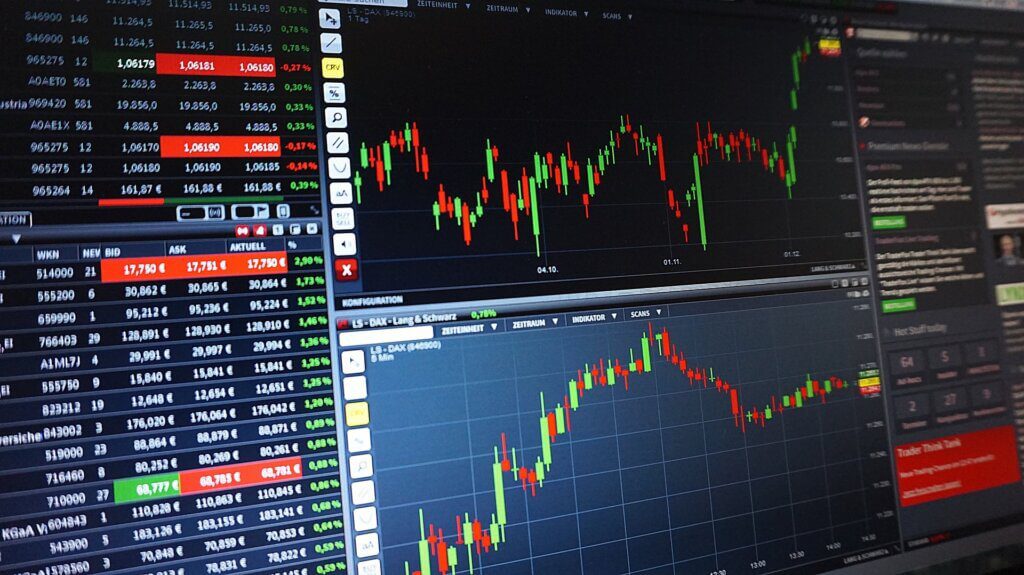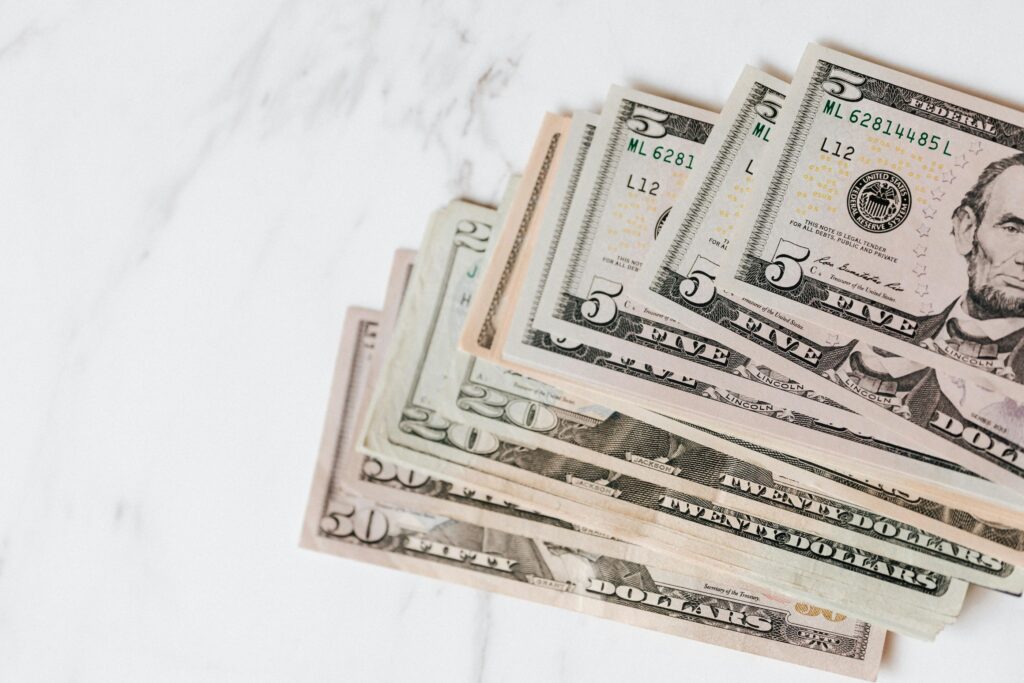Global equities rose and the dollar pared gains on Wednesday after a spike in US wholesale inflation reinforced investor jitters ahead of a hotly awaited consumer price data that could force the Federal Reserve to reconsider its interest rate cuts.
Top stocks today: Meme stocks rising
Buy-the-dip enthusiasm around top stocks, particularly in the Wild West of the meme-stock universe, also continued into its third day, with AMC and GameStop shares rising more than 25% in premarket trading before paring gains.
The MSCI All-World share index hit a new record, adding 0.13% on the day for an 8% rise so far this year.

Wall Street swings were capped as traders waited to see whether inflation in the US was easing, ahead of Friday’s release of the country’s latest consumer price index.
In Europe, the STOXX index rose 0.3%, lifted by health stocks.
Top stocks today: US stocks in focus
US stock futures moved little, pointing to a more subdued start to trading on Wall Street, where meme-stock buying had fuelled a frenzied session the previous day.
The latest boom, in unloved blue-chip stocks, was seen by some as a present-day iteration of the so-called meme-stock craze that began in January 2021.
Top stocks today: Markets Rally – Start trading!
This was when small-time traders on social media and retail trading forums conspired to pile into stocks targeted by hedge funds, who’d borrowed shares to sell in a process known as shorting.
Top stocks today: Inflation remains high
Despite the lack of rate increases forecast for 2024, the fact that inflation remains higher than expected has caused investor hopes for substantial rate cuts to wane.
The market now is pricing in just 43 basis points of cut by December, down from 150 bps at the start of the year. US producer prices rose more than expected in April, underscoring the fact that inflation has remained quite sticky.
The chair of the Federal Reserve, Jerome Powell, called the PPI data ‘mixed’ rather than ‘hot’, noting the downward revision in the previous month’s data.
Top stocks today: Higher energy prices slowing growth
The yen was sitting near its weakest since late January at 155.595 per dollar, with traders on alert for Japanese currency officials to step in once again.
Meanwhile, some of the biggest stocks in the world are sliding because higher energy prices are slowing economic growth.
A report from the International Energy Agency predicted a slowdown in energy demand this year, leading oil prices lower.
Top stocks today: Commodity shares
Brent crude futures dropped 0.4% to $82.03 a barrel. US crude, which set a new record high Monday, fell 0.5% to $77.60 a barrel.
Shares in New York Community Bancorp (NYCB.N) jumped around 6% in premarket trading Wednesday after the bank announced it sold roughly $5 billion in mortgage warehouse loans to the largest US bank by assets.
The sale to JPMorgan Chase (JPM.N) will help ease liquidity for NYCB as its new executive team heads into its second year of trying to revive profitability.
Oil trading price: Why you should be trading oil today!
The sale to JPMorgan Chase will help ease liquidity for NYCB as its new executive team heads into its second year of trying to revive profitability.
The deal is seen as a win for NYCB. Analysts at Jefferies wrote: This is a key step for management to re-establish credibility and bolster profitability.
In the past few months alone, the bank lost nearly $2 billion in the quarter ending in January, witnessed an exodus of bankers and depleted its deposit base.
Top stocks today: NYCB shares
As the new management team, under the helm of the former Comptroller of the Currency Joseph Otting, has been hard at work shrinking the lender’s non-core assets and exists from commercial loans – commercial real estate (CRE) lending specifically – which remains deeply traumatised by fears of default in response to rising interest rates and low occupancy.
These are mortgage warehouse loans which NYCB provides as lines of credit to lenders to fund mortgages, paid back when the mortgage lender sells the loan to an investor. The mortgage warehouse loans totalled 6% or $5.2 billion of the bank’s total $82.3 billion as of March 31.
Top stocks today: Rising rates hurt profits
If rates continue to rise, the bank might face a prolonged period to wind down aggressive underwriting on its multi-family and CRE loans.
A share of NYCB last traded on Wednesday in the presession at $4.11, down about 62% for the year. In May 2023, JPMorgan had marched in to absorb the assets of First Republic Bank, the largest US bank failure since the 2008 financial crisis.
NYCB’s net interest margin remains under pressure from a run on deposit teams it bought along with Signature Bank.
Nearly 200 Manhattan bankers from the private and commercial banking teams have left, with some going to another, smaller rival, Peapack-Gladstone Financial (PGC.O), and to Dime Community Bancshares (DCOM.O).
NYCB plans to use cash and securities to fund the deal, which is expected to close in the third quarter.
Today’s focus on top stocks includes the movement in the shares of NYCB, which have moved in response to management actions.
Top stocks today can be closely observed in relation to market opportunities and threats.
Top stocks today reflect how the direction of the banking industry is shifting as we observe the performance of NYCB amid a merger deal.
Watching today’s top stocks will help to shape understanding of how bank stocks will recover and when there will be profit opportunities.
US stock index futures were little changed Wednesday as investors waited to see whether an important reading on consumer prices will confirm the recent market rally, fuelled by expectations that monetary policy will grow easier.

Top stocks today: Nasdaq leads the way
The Nasdaq led the way among the top stocks today, touching a new closing record on Tuesday after it rallied on comments from Federal Reserve chair Jerome Powell about the outlook for US growth and inflation.
Powell’s remarks helped to soothe investors despite a hot reading on US producer prices for April.
Economists surveyed by Reuters project the consumer price index (CPI) rose 0.4% in April, just as it did in March. ‘While we expect the CPI to remain too high for the Fed to pivot towards rate cuts, it would nonetheless be a step in the right direction,’ said Julien Lafargue, chief market strategist at Barclays Private Bank, in a note.
If the CPI comes in stronger than expected, it could make market participants more worried about overheating inflation, and the Fed may end up delaying a cycle of interest rate easing.
Top stocks today: CME outlook
The CME FedWatch Tool as of 20 August gives a 66.6% chance that the central bank will cut rates at least 25 points in September, compared with expectations in March that the first cut might come as early as this month.
With those uncertainties lingering, the rally in stocks this year has been boosted by stronger-than-expected earnings in the first quarter, and the view that the Fed can curb inflation without inflicting too much damage on growth, and eventually start cutting interest rates.
NYCB was one of today’s top stocks after its news. Investors will keep an eye on them as the market continues to evolve.
Big public debt piles are usually the result of big political and economic shocks that demand a lot of government spending. But taming them can produce ‘creative’ compromises that markets don’t know how to price.
The cost of reinvesting in the post-pandemic economy and adapting to new global security threats – whether from green energy investment, mitigating the risk of production through chip-making programmes or covering Ukraine-related defence bills – are now being built into future deficits and projected debt ratios.
Debt sustainability is once more high on the agenda for many market participants.
While this problem is rampant in the rest of the Western world, a lot of the hype over ballooning debts focuses on the United States – with good reason.
Over the next age-point increase in the US public debt-to-GDP ratio, to 116% (twice the average level of the previous 20 years), with that figure rising to 166% by 2054.
According to the Federal Reserve chair Jerome Powell, US fiscal policy is on an ‘unsustainable path’.
The average interest cost on US public debt has risen by more than 100% from an all-time low printed in April 2021 to 3.23%, a 14-year high.
That’s because the Fed has hiked interest rates to restrain a short-run, post-pandemic lift to inflation.
Still, the combination of outsized growth and above-target inflation has been fuelled by the demand stimulus that has followed from the even bigger stimulus delivered by unchecked deficits.
That argues for policy to be tighter than many would like.
But even with assumptions that borrowing costs rise more slowly than they did over the past two decades, the CBO’s long-run debt projection is startling: average debt-service costs will exceed the 20-year average of 3.7% only in 2054.
Interim debt accumulation creates a daunting burden, since the CBO projects a ‘primary’ (interest-excluded) budget deficit that will never fall below 2.0% of GDP over the next 30 years.
Worse, the CBO’s projections caution that total debt-service outlays will exceed the nominal GDP growth projections after 2044, signalling a dangerous debt sustainability threshold.
And in its latest forecast, which prompted the latest sell-off, the International Monetary Fund says the US deficit won’t come below 6% of GDP over the next five years – a slight improvement from this year’s 7.1% – as there is no sign of any fiscal retrenchment this election year, and no sign that the Fed will be able to ease substantially given its inability to rein in inflation.
Whatever happens next, it’s difficult to expect anything much in the way of change.
The justification for fiscal largesse has changed, too.
A ‘war economy’ perspective on this issue would suggest that an economy threatened existentially, as US democracy has been by the events of the past few years, or in conflict with geopolitical rivals, can justify big spending regardless of narrower considerations of debt sustainability.
Unicredit’s chief economist Erik Nielsen tells me that a US Treasury official






